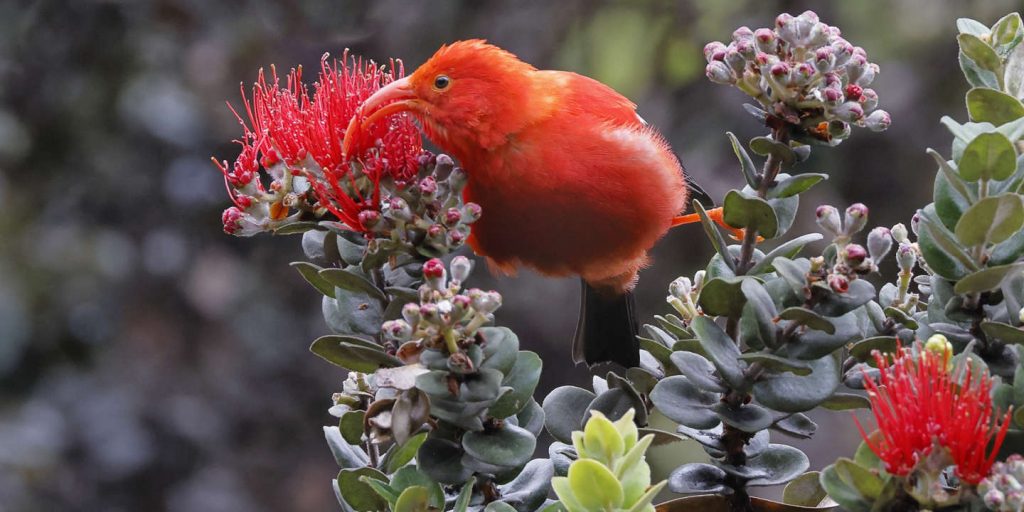
In Hawaii, birds die
realisticThe passerine species that inhabit the archipelago are victims of malaria-carrying mosquitoes, which, thanks to rising temperatures, reach such high altitudes where birds have found refuge. To save them, recourse to synthetic biology is being considered.
On that day the sky decided to deceive the visitor. Depart at dawn to enjoy the morning’s few hours of traditional fine weather, in the Hakalau Forest, halfway over the mighty Mauna Kea, Hawaii’s highest point (4200m above sea level but more than 11,000m from the ocean floor), thick fog. The hike was off to a bad start. Then, at about 9 AM, the sun suddenly came out, raising the curtain in a dazzling spectacle.
On Earth, it is a black volcanic land, so rich that it seems alive. Around it, an amazing color palette, testifies to the extraordinary biodiversity of plants in this Pacific archipelago, famous for being the most isolated in the world. But the most striking thing is that it is the ears that perceive it. A symphony of songs, melodies and rhythms. Here, a subtle, simple alternation of two notes. There, an arpeggio looped by a shaky trail. Or this violent shriek, like the creaking of a door. “Listen carefully to this concert, fill your ears, because you will not be able to hear like this anywhere else in the archipelago. In the past, this music was everywhere. We only hear it here. And I don’t know for how long.”
The man who gives us this alert is named Jack Jeffrey. A biologist and ornithologist, he worked for thirty years on the scientific coordination of the Hakalau Forest National Refuge, on what the locals call big island, The largest and highest in the archipelago. At 72, the retiree is now pursuing a career as a guide and wildlife photographer. On this day in February 2020, as he presents us with his life’s work, he is still ignorant that the Coronavirus will disrupt the planet, the island’s tourism activity and his own agenda…
However, in Hawaii, the birds did not stop dying. Two scientists from the archipelago are currently participating in the World Congress of the International Union for Conservation of Nature (IUCN), which is being held in Marseille, from 3-11 September. The possibility of resorting to modified mosquitoes, as envisioned in Hawaii, and more generally to so-called synthetic biology methods to save endangered species, should be the subject of a movement at the end of the transfiguration.
More than 21 endemic species
What is now happening on this chain of islands, far from the postcard shores and hustle and bustle of Honolulu, the capital, could have gone through a fantastic textbook condition were it not for the ongoing environmental disaster and treatment emergency. The numbers give a spin. Various studies conducted over the past ten years estimate that there were, in the archipelago, about 70 species of endemic birds, in other words not found anywhere else. As a result of the arrival of unique and mysterious birds, 3.5-5 million years ago, a massive explosion in biodiversity followed. Today, 21 people, 11 of which are classified as critically endangered by the International Union for Conservation of Nature and seven others, remain endangered.
You have 82.39% of this article to read. The rest is for subscribers only.

“Organizer. Social media geek. General communicator. Bacon scholar. Proud pop culture trailblazer.”
